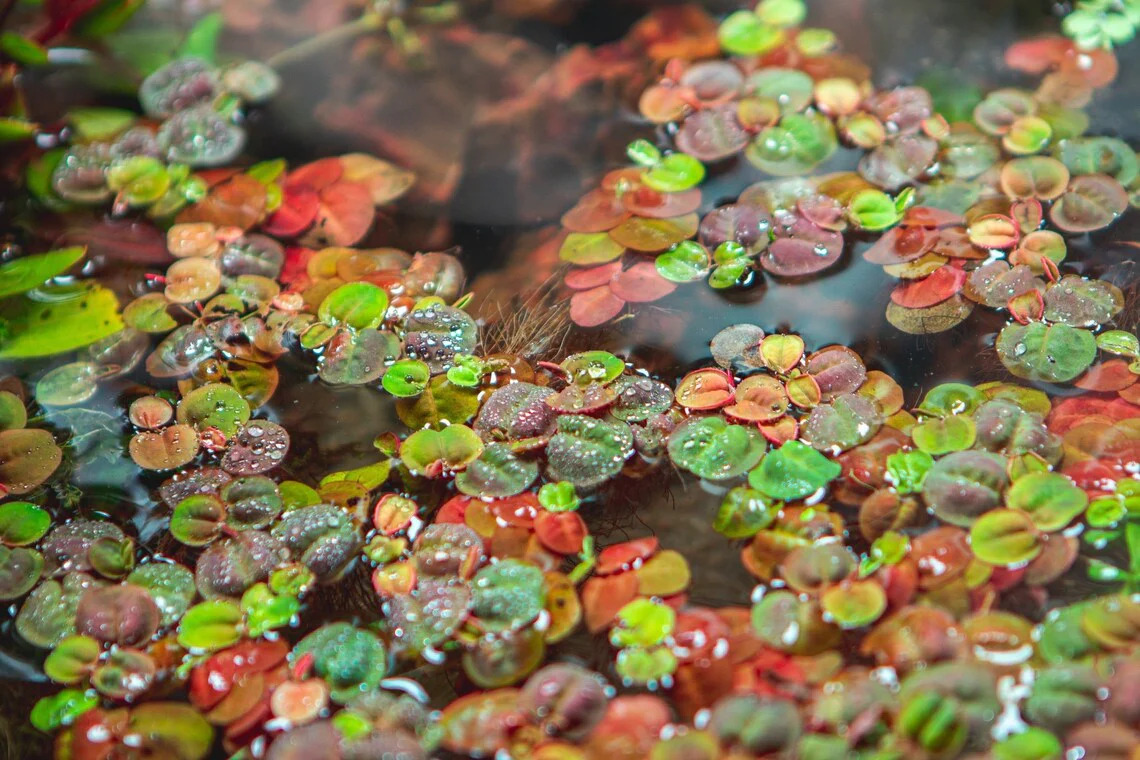Discover the best floater plants to enhance the beauty and health of your aquarium.
Understanding the Importance of Floater Plants
Floater plants play a crucial role in maintaining a healthy and balanced ecosystem in your aquarium. They provide a variety of benefits that can greatly improve the overall well-being of your aquatic pets. One of the key functions of floater plants is their ability to absorb excess nutrients such as nitrates and phosphates from the water. These nutrients can accumulate over time and lead to poor water quality, which can be detrimental to the health of your fish and other inhabitants. By incorporating floater plants into your aquarium, you can help prevent nutrient buildup and maintain a clean and pristine environment.
In addition to their nutrient-absorbing capabilities, floater plants also offer shelter and protection for your fish. The floating leaves create shade and cover, providing a sense of security for your aquatic pets. This is especially beneficial for smaller or more timid species that may feel vulnerable in open spaces. Floater plants can also serve as a spawning site for certain fish, allowing them to lay their eggs among the roots or leaves. This natural breeding behavior can help promote the reproduction and population growth of your fish.
Furthermore, aquarium floater plants contribute to the oxygenation of the water. Through the process of photosynthesis, these plants release oxygen into the aquarium, ensuring an adequate supply of this vital element for your fish and other organisms. This oxygenation is particularly important during nighttime when other plants may cease their oxygen-producing activities. By having floater plants in your aquarium, you can help maintain a stable and oxygen-rich environment for your aquatic pets.
Overall, understanding the importance of floater plants is essential for creating a thriving and balanced aquatic ecosystem. These plants offer numerous benefits, including nutrient absorption, shelter, breeding sites, and oxygenation. By incorporating them into your aquarium, you can enhance the health and well-being of your fish while creating a visually stunning display.
Benefits of Adding Floater Plants to Your Aquarium
There are several compelling benefits to adding floater plants to your aquarium. Firstly, these plants can significantly improve water quality by absorbing excess nutrients. As mentioned earlier, floater plants have the ability to remove nitrates and phosphates from the water, thus reducing the risk of algae overgrowth and maintaining a healthier ecosystem. By reducing nutrient buildup, you can also help minimize the need for frequent water changes and chemical additives to control water parameters.
In addition to their water-cleansing properties, floater plants offer aesthetic advantages. Their floating leaves create a beautiful and natural look in the aquarium, adding depth and dimension to the overall design. They can be used to create shaded areas or provide contrast against other aquatic plants. Some floater plants even produce vibrant flowers, further enhancing the visual appeal of your aquarium.
Another benefit of floater plants is their ability to provide a natural food source for your fish. Many species of floater plants produce small organisms, such as daphnia or mosquito larvae, which serve as a nutritious snack for your fish. This natural food supply can contribute to the overall health and vitality of your aquatic pets. Additionally, floater plants can also serve as a grazing area for herbivorous fish, allowing them to nibble on the leaves and obtain essential nutrients.
Lastly, floater plants can help create a more natural and comfortable environment for your fish. The floating leaves provide shade and hiding spots, reducing stress and aggression among your fish. This can be particularly beneficial for species that prefer dimly lit or densely vegetated habitats. By replicating their natural environment, you can promote the well-being and natural behavior of your fish.
In conclusion, the benefits of adding floater plants to your aquarium are numerous. From improving water quality and enhancing aesthetics to providing natural food sources and creating a comfortable habitat, these plants offer a wide range of advantages for both you and your aquatic pets.
Top 5 Floater Plants for Your Aquarium
When it comes to choosing floater plants for your aquarium, there are several excellent options to consider. Here are the top 5 floater plants that are highly recommended:
1. Water Lettuce (Pistia stratiotes): Water lettuce is a popular choice among aquarists due to its attractive appearance and ease of care. It has large, floating leaves that resemble lettuce, hence the name. Water lettuce helps absorb excess nutrients and provides shade for your fish. It can grow quite large, so make sure you have enough space in your aquarium.
2. Amazon Frogbit (Limnobium laevigatum): Amazon frogbit is another popular floater plant known for its fast growth and ability to absorb excess nutrients. It has round, floating leaves with long, dangling roots. This plant is easy to care for and provides excellent shade for your fish.
3. Red Root Floaters (Phyllanthus fluitans): Red root floater is a stunning floater plant with small, round leaves that have vibrant red roots. It adds a splash of color to your aquarium and helps control nutrient levels. This plant requires moderate lighting and regular pruning to prevent overcrowding.
4. Salvinia (Salvinia natans): Salvinia is a floating fern that forms dense mats on the water surface. It has small, oval-shaped leaves with tiny hairs that repel water, giving them a unique appearance. Salvinia is known for its excellent nutrient absorption capabilities and can help combat algae growth.
5. Dwarf Water Lettuce (Pistia stratiotes 'Dwarf'): As the name suggests, dwarf water lettuce is a smaller version of the regular water lettuce. It has similar characteristics but takes up less space in your aquarium. Dwarf water lettuce is a great choice for smaller tanks or those with limited surface area.
These are just a few examples of the many floater plants available for your aquarium. Each plant has its own unique characteristics and care requirements, so be sure to research and choose the ones that best suit your tank and preferences.
Tips for Caring for Floater Plants
Caring for floater plants is relatively easy, but there are a few key tips to keep in mind to ensure their health and vitality:
1. Lighting: Most floater plants prefer moderate to high lighting conditions. Ensure that your aquarium has appropriate lighting to support their growth. LED lights are a popular choice as they provide bright and energy-efficient illumination.
2. Nutrient Levels: While floater plants help absorb excess nutrients, it's important to maintain balanced nutrient levels in your aquarium. Regularly test the water parameters and adjust fertilization accordingly. Avoid overfeeding your fish, as excess food can lead to nutrient buildup.
3. Pruning: Floater plants can grow rapidly and may require regular pruning to prevent overcrowding. Trim any yellow or decaying leaves to maintain the overall health of the plant. Be careful not to remove too much at once, as this can cause stress or shock to the plant.
4. Water Movement: Floater plants thrive in gentle water movement. Avoid placing them in areas with strong currents or near filter outlets, as this can damage their delicate roots and leaves. Using plant corrals is a great way to protect your aquatic plants from water movement.
5. Temperature and pH: Different floater plants have varying temperature and pH requirements. It's important to choose plants that are compatible with your aquarium's conditions. Most floater plants prefer temperatures between 70-80°F (21-27°C) and a slightly acidic to neutral pH.
By following these care tips, you can ensure that your floater plants remain healthy and contribute to the beauty and balance of your aquarium.
Creating a Stunning Aquascape with Floater Plants
Floater plants can be key elements in creating a stunning aquascape that is both visually appealing and beneficial for your aquarium's inhabitants. Here are some tips to help you achieve a beautiful and balanced design:
1. Placement: Consider the placement of your floater plants to create focal points and visual interest. You can group them together in certain areas or disperse them throughout the aquarium for a more natural look. Experiment with different arrangements to find the one that suits your aesthetic preferences.
2. Contrast: Use floater plants to create contrast against other types of aquatic plants. For example, if you have tall, upright plants in the background, place some floater plants with dangling roots in the foreground to add depth and dimension. The contrasting shapes and textures will create a more dynamic and visually appealing aquascape.
3. Height Variation: Incorporate floater plants of different heights to add visual interest and create a sense of depth in your aquarium. Combine tall plants like water lettuce or Amazon frogbit with shorter plants like dwarf water lettuce or red root floater. This layering effect will give your aquascape a more three-dimensional look.
4. Color Palette: Consider the color palette of your aquarium when choosing floater plants. If you have a vibrant and colorful setup, opt for floater plants with contrasting hues, such as red root floater or Amazon frogbit. On the other hand, if you prefer a more natural and subdued look, go for plants with green or muted tones, like water lettuce or salvinia.
5. Maintenance: Regular maintenance is key to keeping your aquascape looking its best. Prune and trim your floater plants as needed to maintain their shape and prevent overcrowding. Remove any dead or decaying leaves to prevent nutrient buildup and maintain water quality. Additionally, perform regular water changes and monitor the overall health of your aquarium's inhabitants.
With these tips in mind, you can create a stunning aquascape that showcases the beauty of floater plants while providing a healthy and comfortable environment for your fish.





Leave a Comment